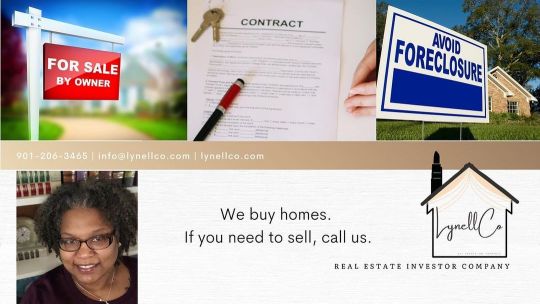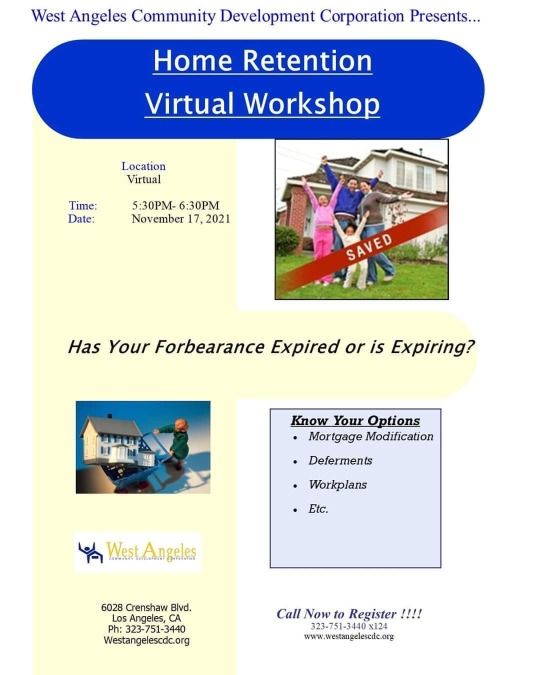#preforeclosure
Explore tagged Tumblr posts
Text
Securing Your Home: 5 Ways to Avoid Foreclosure in Prince George's County, Maryland
Brenda Douglas Are you a senior homeowner in Prince George’s County, Maryland, worried about the looming possibility of foreclosure? Whether you’ve lived in your home for decades or are considering aging in place, the thought of losing your cherished abode can be distressing. Brenda Douglas, your Senior & Aging in Place Agent, is here to provide you with expert insights on how to avoid…

View On WordPress
0 notes
Photo

We do drone & photo inspections for commercial, residential, construction, and high-end properties. Also offering photos & drone photos/videos to realtors, lenders, investors, and wholesalers in the Knoxville & surrounding areas. #FieldInspections #photoinspections #dronephotos #dronevideos #preforeclosure #realestatephotos #constructionphotos #Part107DronePilot
2 notes
·
View notes
Text

Dealing with a home in foreclosure can be challenging and overwhelming for homeowners. When faced with the difficult task of selling a property in foreclosure, timing is everything. We buy houses as-is, with all cash offers, and can close on your timeline and can bring time and convenience to the home-buying process. #Foreclosure#preforeclosure#WebuyhousesMassachusetts#Webuyhousesinforeclosure#webuyhousesinpreforclosure
www.turningpointhomebuyers.com
0 notes
Link
0 notes
Text
Must-Do Steps to Sell My Erie Home in Preforeclosure!

Have you ever stared at a letter while being afraid you would lose your home? You're not the only one. A lot of people in Erie are going through the same thing. One good thing is that you can sell your house before it goes into foreclosure. Yes, it does sound scary. But if you do things the right way, it's possible and might not be as hard as you think. Let's list the things that need to be done to get out of this mess.
Know When Things Happen
First, make sure you know how much time you have. It's not over until you get a notice of failure from your lender.
But the clock keeps going after that:
Find out when the foreclosure process starts by looking into the rules in your state.
Get in touch with your lender to get an exact date.
Knowing your history is important. It helps you plan your steps so you don't have to scramble at the last minute.
Check The Value Of Your Home
The next step is to find out how much your pre-foreclosure house in Erie is worth on the market right now.
See what homes like this have sold for recently in Erie.
You might want to get a skilled opinion.
Knowing how much your home is worth gives you the power to make smart choices going forward.
Talk to an Expert in Real Estate
This is where things get better.
Talk to a real estate agent who knows how to help people who want to sell their pre-foreclosure home in Erie.
They can give you great advice and help you figure out what your choices are.
Look for someone who has worked with homes that are in bad shape before.
Talk about the choices of listing the property or selling it directly.
You will find the process easier to handle if you work with a good expert.
Make Use of the Right Keywords
Modern society places a high value on being seen.
When you post your home online or contact potential buyers, don't forget to mention that it might be a one-of-a-kind chance.
People who are looking for a deal in your area will be interested if you say things like "sell my preforeclosure house in Erie."
Get Ready For A Quick Move
When it comes to preforeclosure, time is the key. To make the sale go faster:
Before you put your house on the market, clean it up and remove any personal items.
Keep all the important papers in order and easy to find.
Being ready can make the selling process go much faster.
Think About Cash Offers
When your home is about to go into pre-foreclosure, you may not have time to wait for financial approvals. Because of this, cash deals are very appealing.
Understand that cash deals may be less, but they come through faster.
Think about whether a quick sale is better than a higher price that might take longer to sell.
A cash deal could save your home from foreclosure and help you start over.
Openly Talk To People
In the end, don't close the lines of contact. This is especially important for your lender.
Let them know that you want to sell.
Find out if they give short sales or any other types of help.
Being honest with your lender could lead to ideas you hadn't thought of before.
If you follow these steps, it won't be hard to sell your Erie home before it goes into debt.
Even though it's hard right now, know that you have choices and can get help.
Early action and well-thought-out choices can help lessen the stress and financial effects of foreclosure.
0 notes
Video
youtube
Boosting Your Real Estate Business: Jay Conner's Proven Private Money Techniques
https://www.jayconner.com/podcast/episode-115-boosting-your-real-estate-business-jay-conners-proven-private-money-techniques/
Welcome to the latest edition of our Raising Private Money Podcast, we are excited to share some valuable insights from our recent episode with real estate investor and Private Money expert, Jay Conner.
Today Jay Conner joins Paul Lizell on his
Flipping Out Podcast
and talks about his strategies for leveraging Private Money to maximize profits in real estate deals.
One of the key takeaways from the episode was the importance of Private Money in the current financial climate. Jay emphasized that having access to private lenders is crucial, especially as banks tighten their lending criteria. Jay himself has raised an impressive $8,000,000 in Private Money to fund his deals, with an average profit of $78,000 per deal.
Jay also shared his unique approach to raising Private Money. Rather than asking for money upfront, he focuses on building relationships and creating win-win situations. By presenting potential lenders with specific deals, including location, after repaired value, funding required, and closing date, Jay creates urgency for them to wire funds to his real estate attorney. He has mastered the art of raising Private Money and teaches his private lending program to others in his warm market.
In addition to his expertise in Private Money, Jay also discussed the benefits of buying properties “subject to” the existing loan, particularly in this low-interest rate environment. With over 80% (possibly 90%) of active mortgages in the US having interest rates below 4%, buying a house subject to the existing note with a low-interest rate can provide long-term rental cash flow. Jay’s book, titled “Where to Get the Money Now,” provides further insights into his strategies and is available to anyone who wants a copy.
In other segments of the episode, Jay talked about his marketing strategies, including Google search and Facebook ads, to generate leads. He also discussed the importance of making offers and negotiating effectively to find profitable deals. Jay’s experience and success in the real estate industry are truly inspiring.
We hope that these snippets from our podcast episode have piqued your interest. If you would like to learn more, we encourage you to listen to the full episode, “Flipping Out – Real Estate Investing Minus the Bank,” featuring Jay Conner.
Timestamps:
01:23 – Profitable Lifestyle: $78k per deal, 3/month
04:33 – 2009 financial crisis leads to funding issues.
09:25 – Different Rental Market, Rates Affect Cash Flow.
10:59 – Diverse Real Estate Options In North Carolina.
13:44 – Less Competition, Rural Markets Growing, Attractive Deals.
17:31 – Best Campaigns: Preforeclosure, Absentee Owners, Inheritance.
23:07 – Seller’s Expectations About Property Price Are Not Final.
26:28 – Full Rehabs vs Whole Tails Percentage.
28:53 – Sold Homes On Private Money With Cash Flow.
32:26 – Private Money Key To Funding Deals Easily.
37:14 – Win-Win Fundraising, Awesome Private Lending Education.
38:35 – Leverage Private Money For Maximum Real Estate Profit.

Private Money Academy Conference:
https://www.JaysLiveEvent.com
Free Report:
https://www.jayconner.com/MoneyReport
Join the Private Money Academy:
https://www.JayConner.com/trial/
Have you read Jay’s new book: Where to Get The Money Now?
It is available FREE (all you pay is the shipping and handling) at
https://www.JayConner.com/Book
What is Private Money? Real Estate Investing with Jay Conner
https://www.JayConner.com/MoneyPodcast
Jay Conner is a proven real estate investment leader. He maximizes creative methods to buy and sell properties with profits averaging $67,000 per deal without using his own money or credit.
What is Real Estate Investing? Live Private Money Academy Conference
https://youtu.be/QyeBbDOF4wo
YouTube Channel
https://www.youtube.com/c/RealEstateInvestingWithJayConner
Apple Podcasts:
https://podcasts.apple.com/us/podcast/private-money-academy-real-estate-investing-with-jay/id1377723034
Facebook:
https://www.facebook.com/jay.conner.marketing
Twitter:
https://twitter.com/JayConner01
Pinterest:
https://www.pinterest.com/JConner_PrivateMoneyAuthority
Listen to our Podcast:
https://www.buzzsprout.com/2025961/episodes/14000493
#youtube#real estate#real estate investing#real estate investing for beginners#flipping houses#Private Money#Raising Private Money#Jay Conner
0 notes
Text
How Can My Bank Advertise My House in Preforeclosure?
Don’t forget to like and subscribe to this channel for the latest real eastate coaching tips!!
Brought to you by eXp Realty, LLC, Office: 888-959-9461 & Collette McDonald, Direct: 770-500-8400. For more information or to contact us, please visit us at: http://www.collettemcdonald.com/
#Bank Advertise My House#Foreclosure process#Real estate advice#Foreclosure prevention#Real Estate Services Atlanta#Real Estate Expert Atlanta
0 notes
Text
To Stop Foreclosure in Dallas
To Stop Foreclosure in Dallas
What is the difference between Foreclosure and Preforeclosure for homeowners and how “to stop foreclosure in Dallas.” These are two terms that are commonly used in the real estate industry. While these terms may sound similar, they have very different meanings and implications for both homeowners and potential buyers. To Stop Foreclosure in Dallas Foreclosure, What is That? Foreclosure is a…

View On WordPress
#analyzing-a-real-estate-deal#analyzing-my-homes-value#attract-multiple-offers-in-a-sellers-market#avoid-foreclosure-in-dallas#behind-on-mortgage#behind-on-mortgage-payment#buy-my-cedar-hill-tx-home-fast#buy-my-cedar-hill-tx-house-fast#buy-my-dallas-home#buy-my-dallas-house#buy-my-foreclosure-home-in-dallas#buy-my-foreclosure-house#buy-my-foreclosure-house-in-dallas#buy-my-home-fast-in-cedar-hill#buy-my-home-fast-in-cedar-hill-tx#buy-my-home-fast-in-Dallas#buy-my-home-fast-in-garland#buy-my-home-fast-in-grand-prairie#buy-my-home-fast-in-mesquite#buy-my-home-fast-in-oak-cliff#buy-my-home-for-cash-fast#buy-my-home-for-cash-in-dallas#buy-my-home-in-cedar-hill-tx#buy-my-home-in-dallas#buy-my-home-in-foreclosure-in-dallas#buy-my-home-in-mesquite#buy-my-home-in-mesquite-tx#buy-my-house-fast-in-mesquite#buy-my-house-for-cash#buy-my-house-for-cash-fast
1 note
·
View note
Link
2 notes
·
View notes
Photo

Info about foreclosures. More coming later on follow @ramesudevelopments #realestate #foreclosure #preforeclosure #lispendens #yellowletter #hardship #nyc #rei #ramesudevelopments https://www.instagram.com/p/Bssu6hChv_6/?utm_source=ig_tumblr_share&igshid=1214tqtqgwyor
1 note
·
View note
Photo

Are you a mortgage lender or banker dealing with clients who have stopped mortgage payments and are unresponsive? Our services include pre-foreclosure photo inspections to determine whether properties are occupied or vacant. We will provide you with photographic proof to indicate the property's occupancy status, enabling you to proceed with the necessary actions. Additionally, we offer photo assessments to evaluate the property's condition. Vacant forecloused homes are susceptible to vandalism and other problems. We can inspect such properties to assess their condition. For further details, please contact us at 865-386-7398 #preforeclosure #foreclosedhomes #realestateinvestor #realestatewholesaler #Knoxvilleinvesting #seviercountyinvesting #Mortgagebroker #REO #BPO
0 notes
Photo

I’m looking for houses to buy. If you know anyone looking to sell, please contact me. I’m paying a $500 referral fee if we close. #PreForeclosure #AbandonedHomes #TiredLandlords #Inherited #Divorced https://www.instagram.com/p/CaaTv5ZFmJ1/?utm_medium=tumblr
0 notes
Photo

We stopped someone from losing their house to the sheriff sale auction today with minutes remaining. All from a door knock. We can help stop foreclosure, save your house, and credit. We don’t always have to buy the house but can still provide value. #stopforeclosure #preforeclosure #sheriffsale #winwinsolution #savehouse #preventforeclosure #realestatesolutions #realestatesolution (at Ewing, New Jersey) https://www.instagram.com/p/CZN2YHFstLP/?utm_medium=tumblr
#stopforeclosure#preforeclosure#sheriffsale#winwinsolution#savehouse#preventforeclosure#realestatesolutions#realestatesolution
0 notes
Photo

West Angeles CDC presents the Home Retention Virtual Workshop on November 17, 2021, from 5:30 pm - 6:30 pm. Learn options to resolve mortgage delinquency and/or prevent foreclosure. Examine options & resources related to restoring basic security, rebuilding credit, creating a realistic living budget, & assistance submitting your loss mitigation packet to your lender. ALL services are FREE. PRE-REGISTRATION REQUIRED!!! Click the Link to Register www.westangelescdc.org . . . . #westangelescdc #homeretention #bankruptcy #foreclosure #realestate #homeownershipmatters #foreclosure #preforeclosure #homeforsale #realtorlife #realtistlife #realtist #AnnaQueenTutt (at West Angeles COGIC) https://www.instagram.com/p/CWWgxHeBI6y/?utm_medium=tumblr
#westangelescdc#homeretention#bankruptcy#foreclosure#realestate#homeownershipmatters#preforeclosure#homeforsale#realtorlife#realtistlife#realtist#annaqueentutt
0 notes
Photo

Looking for motivated sellers in Greenville County but will consider Spartanburg, Pickens, Oconee, and Anderson as well. #realestate #investmentproperty #sellyourhome #foreclosure #preforeclosure upstatehousessale.com https://www.instagram.com/p/B9Z6wenHGgS/?igshid=25jsccxh2vkm
0 notes